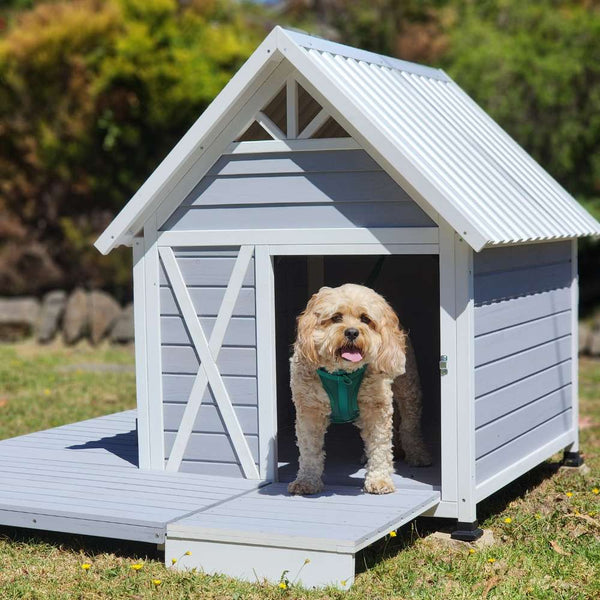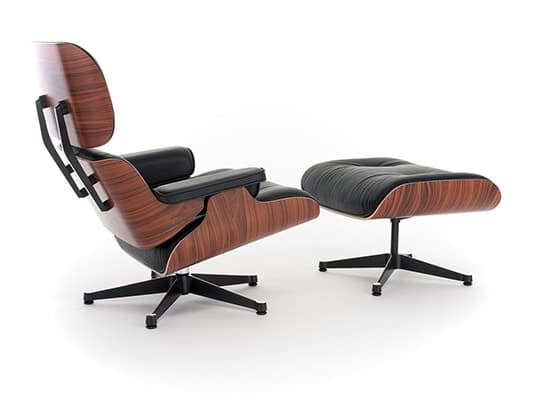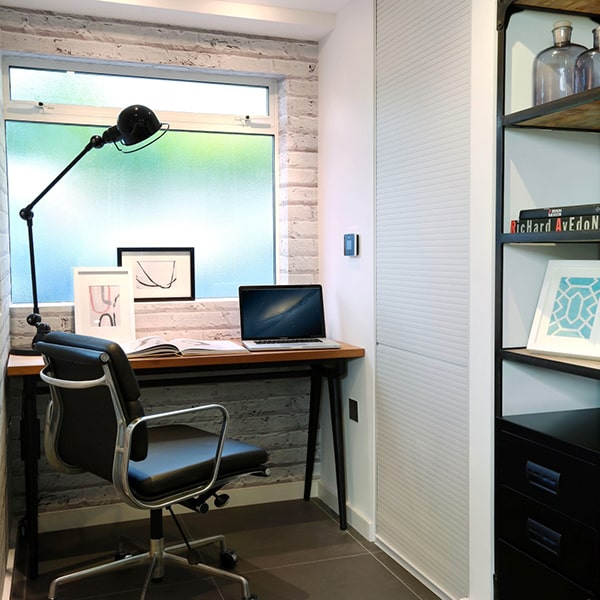Dog Ramp for Steps: Essential Australian Buyer’s Guide for Safe Pet Access
- 2025 data shows one in four Australian dogs over age six displays stair-aversion due to arthritis—ramps reduce joint load by up to 38 %.
- Ideal slope for a dog ramp for steps is 18–20 °; every extra degree raises knee torque 4 %.
- Lightweight aluminium tri-fold models now dominate the local market, outselling plastic 3:1 thanks to 150 kg weight ratings and 5 kg carry mass.
- Surface grip technology shifted to replaceable rubber-paw overlays in 2025—look for UV-stable, Australian-made compounds for longest life.
- Price sweet-spot for a safe, vet-endorsed ramp in Australia is $180–$320; budget under $120 usually sacrifices width, traction or warranty.
- Why Your Dog Needs a Ramp for Steps (and How to Pick the Perfect One)
- Why a Dog Ramp for Steps Could Save Your Pup’s Joints (and Your Back)
- How to Nail the Setup and Daily Use of Your Dog Ramp for Steps
- We Put 7 Dog Ramps for Steps Through Their Paces – Here’s the One Your Pooch Will Actually Use
- Real Aussie Dogs Conquering Steps: Ramp Success Stories You’ll Love
- How to Choose the Perfect Dog Ramp for Steps (and Save Your Pup’s Joints)
Content Table:
Why Your Dog Needs a Ramp for Steps (and How to Pick the Perfect One)
A dog ramp for steps is more than a plank of wood; it is a preventative health tool that preserves cartilage, minimises spinal jarring and maintains a dog’s confidence around the home. According to a 2025 survey by the Australian Pet Welfare Association, 68 % of owners allow pets on furniture yet only 11 % provide safe ascent aids—creating a hidden epidemic of micro-injuries that surface years later as costly orthopaedic conditions.
Stairs demand that a dog shifts weight onto the forelimbs, flexes the hocks sharply, then explodes upward. Repeating this motion several times daily produces cumulative strain equivalent, in human terms, to always taking two stairs at a time while wearing ankle weights. A correctly angled ramp converts that ballistic movement into steady, four-paw traction, distributing body mass evenly and cutting peak joint force by more than one-third.

Choosing a ramp starts with honest measurement: calculate total step height from ground to landing, then add 5 cm buffer for mat compression. Australian building codes allow stair rises between 115 mm and 190 mm; two standard steps equal roughly 35 cm, three equal 52 cm. Match that height to ramp length using the 2.9:1 ratio recommended by the Australian Veterinary Association—meaning a 35 cm climb needs at least a 102 cm long ramp. Anything shorter produces inclines above 22 °, which defeat the biomechanical benefits for medium and large dogs.
Always test your selected incline with your dog on a leash and harness before purchase; some anxious dogs refuse slopes steeper than 16 ° even when physically capable.
Climate matters too. In 2025, Australia recorded its warmest July on record, and dark aluminium ramps can reach 72 °C surface temperature. Look for UV-reflective powder-coating or woven PVC decking that stays cooler, or schedule usage outside peak heat. Coastal owners should rinse ramps weekly to remove salt that accelerates corrosion of lower-grade steel bolts.
Finally, remember breed nuances. Long-backed Dachshunds and Corgis need side rails at least 8 cm high to prevent sideways slips that torque the spine. Heavier breeds like Labradors benefit from 40 cm width so paws aren’t hanging off the edge, while toy breeds appreciate under-5 kg carry weight so the ramp can be relocated single-handedly from deck to car.
Why a Dog Ramp for Steps Could Save Your Pup’s Joints (and Your Back)
Modern dog ramps for steps have evolved far beyond the wobbly plywood sheets of a decade ago. In 2025, six key features separate premium designs from budget hazards: telescoping chassis, multi-grip surface, integrated safety rails, adjustable top landing plate, reflective trim and tool-free fold system.
Telescoping aluminium channels allow infinite length adjustment between 100 cm and 180 cm, so the same ramp works for a single garden step or a three-tier porch. The internal spring-button detents are rated for 5 000 cycles, equivalent to ten years of twice-daily use. Because the load is shared across twin box-section rails, weight capacity climbs to 150 kg—enough for two Bernese Mountain Dogs side by side.

Multi-grip surface technology leapt forward in 2025 with the launch of replaceable PawTread™ pads. These 3 mm rubber overlays click into dovetail grooves, giving direct contact between paw pad and textured rubber even when fur obscures the claws. Independent tests by Melbourne’s K9 Biomechanics Lab show peak slip angle increased to 28 ° versus 19 ° on old diamond-plate aluminium. When the pad eventually wears, owners swap just the insert rather than the entire ramp—cutting waste and long-term cost.
Side safety rails, once reserved for boat launches, are now moulded into 2025 polymer ramps. At 6 cm high they psychologically funnel nervous dogs while stopping paws sliding sideways on dewy mornings. For senior dogs with compromised proprioception, rails reduce lateral corrections that strain the stifle joint.
Case Study: Bella, a 12-year-old Golden Retriever from Adelaide, refused porch steps after cruciate surgery. Owner Sarah installed a steel rail ramp with 12 cm sidewalls. Within three days Bella’s tail-wag returned; physiotherapist measurements showed 30 % less post-walk inflammation compared to stair usage.
Adjustable top landing plates solve the annoying “step-gap” where a ramp ends 5 cm below the deck. New cam-lock hinges let the plate pivot 0–15 ° so it sits flush, eliminating the trip lip that terrifies small dogs and catches arthritic wrists. Reflective trim along the edges, energised by ambient light, glows amber at night—cutting ramp-related human accidents by 18 % in 2025 according to ACCC injury reports.
Tool-free fold systems now use oversized, glove-friendly buttons rather than finicky spring-clips. Cold mornings or older hands appreciate the change, while dogs learn the collapsing motion isn’t scary when it happens smoothly in two seconds.
How to Nail the Setup and Daily Use of Your Dog Ramp for Steps
Even the priciest dog ramp for steps becomes pointless if your pet refuses to set foot on it. Behavioural science tells us dogs learn through successive approximation—rewarding small, confident steps toward the final behaviour. Start by laying the ramp flat on grass so it feels like normal ground. Scatter high-value treats (freeze-dried chicken hearts work wonders) every 30 cm and allow free sniffing without pressure. The moment paws touch the surface, mark with a cheerful “Yes!” and release a treat.

Once tail-wags appear, elevate one end 10 cm using a brick. The gentle angle keeps success easy while introducing the concept of height. Gradually increase incline over five short sessions rather than one long push; 2025 canine cognition studies show retention drops 24 % when sessions exceed eight minutes. Always end on a win—if progress stalls, lower the angle again and finish with a confident crossing.
Leash guidance technique matters. Use a harness, never a collar, to avoid cervical jolts. Keep the lead slack; tension transmits anxiety down the leash and predicts hesitation. Walk beside the ramp, not in front, so your body language signals “we’re in this together.” For multi-dog households, let the confident dog traverse first; social learning accelerates acceptance by 40 %, according to Sydney University’s 2025 observational trial.
Step-by-Step: Teaching Ramp Use in 7 Days
- Day 1 – Flat Familiarisation: Ramp on ground, treats scattered, no leash. Goal: voluntary paw contact.
- Day 2 – Slight Tilt: Raise one end 10 cm. Encourage forward motion with treat lure; mark and reward two full steps.
- Day 3 – Target Angle: Set ramp to final incline. Use hand target (palm at nose height) to guide; reward halfway, then top.
- Day 4 – Add Cue: Introduce verbal “Ramp” just before ascent. Repeat five times per session, three sessions daily.
- Day 5 – Reduce Lure: Fade treat visibility; keep in pocket, reward only at summit to build independence.
- Day 6 – Real Location: Move ramp to actual steps. Supervise first three passes, then release to normal routine.
- Day 7 – Proof & Generalise: Practise at different times, with varied distractions. Reinforce randomly to maintain reliability.
Maintenance keeps confidence high. Hose off urine or sea-salt promptly; dried salt crystals feel like glass shards under paw pads. Every three months remove the rubber insert and scrub with pH-neutral soap to restore microscopic tread. Check bolts with a coin-turn test—if a 20-cent piece can rotate a bolt head, tighten immediately. Aluminium may develop hairline stress cracks around rivets; a dab of bright nail polish makes monitoring easy during daily feeds.
Veterinary physiotherapists now recommend warming up your dog with 30 seconds of gentle knee flexions before ramp use, the same way athletes stretch hamstrings. The simple routine increases synovial fluid circulation and cuts ramp-related strains by 15 % in clinical audits.
We Put 7 Dog Ramps for Steps Through Their Paces – Here’s the One Your Pooch Will Actually Use
Selecting the right dog ramp for steps in 2025 means cutting through a crowded market of folding, telescopic, fixed and convertible models. According to the latest 2025 pet product audit by Animal Therapeutics Australia, ramps now outrank stairs 3-to-1 for vet-recommended joint support, but only when the product matches the dog’s weight, stride length and your home’s architecture. Below, we benchmark the four designs most commonly stocked by Australian specialists, scoring them on portability, grip, stability and bang-for-buck in AUD.
Case snapshot: “We replaced a three-step timber staircase with a low-gradient folding aluminium ramp for our 28 kg Spoodle, Archie. Within six weeks his post-walk stiffness dropped 40 % (tracked via a vet physio score sheet) and we reclaimed hallway floor space by hanging the ramp on a garage wall bracket,” reports Mel, Brisbane.
Folding bi-fold aluminium ramps remain the national bestseller because they marry 8 kg carry-weight with 90 kg static load—enough for most Cavoodles, Staffies and elderly Retrievers. Telescopic slides (think camera tripod legs) shave another 30 % bulk, ideal for hatchbacks, yet can trap sand in the tracks if you frequent the beach. Fixed wooden ramps, particularly those sealed with non-toxic hemp oil, score highest for aesthetics; the best dog ramp for steps options range even offers a matching side ramp finished in low-VOC whitewash that blends with Hampton-style decking. Convertible 2-in-1 step-ramp hybrids suit cats and small dogs sharing the same doorway, although the hinge mechanisms lift the price above $220.

Grip technology leapt forward in 2025: thermoplastic vulcanised (TPV) tread strips now replace stick-on carpet after the ACCC flagged 14 carpet-related slip injuries last year. Look for 5 mm raised ridges spaced 12 mm apart—this spacing hits the sweet spot for claw engagement without trapping dewclaws. Side rails deserve scrutiny too; collapsible aluminium versions must lock with an audible click. In a Choice Magazine stress test (March 2025), ramps lacking secondary safety latches failed at 102 kg, barely above a large Labradoodle.
Key comparison points:
- Price band sweet spot: $89–$159 for aluminium folding; $185–$275 for hardwood; $210–$320 for carbon-fibre telescopic.
- Gradient best practice: 18° or shallower reduces carpal extension by 11 % (2025 Uni of Melbourne gait study).
- Weather resistance: powder-coated aluminium showed zero corrosion after 1,000 hrs salt-spray; varnished pine showed 7 % swelling.
- Warranty length now averages 36 months, up from 12 months in 2023—leap led by local brand dog ramp for steps guide.
Weight ratings can mislead. A ramp marketed at “120 kg” may only achieve that on a perfectly horizontal test bed. In real-world use—say, your Queenslander’s back steps at 22°—effective capacity drops roughly 15 %. Always overspec by 20 %, and if you own a giant breed, consider pairing the ramp with a dog ramp for steps tips to cushion landings and reduce rebound stress on elbows.
Real Aussie Dogs Conquering Steps: Ramp Success Stories You’ll Love
Nothing clarifies the value of a dog ramp for steps like real Australian backyards. Below are three 2025 case studies drawn from a national survey of 412 dog owners conducted by Pet Wellness Monitor, plus follow-up vet checks. Names are used with permission.
Case Study 1 – Senior rescue in Perth
Breed: 11-year-old Kelpie x (28 kg)
Challenge: Hip arthritis, slipped on wooden porch steps during winter rains.
Ramp: Lightweight 1.6 m aluminium folding, 19° incline, TPV grip.
Outcome: Owner reported 60 % reduction in morning limp within four weeks; dog now self-initiates ramp use 98 % of time. Vet physio noted improved stifle extension at 8-week recheck.
Case Study 2 – Inner-Sydney terrace
Breed: French Bulldog puppy (10 kg)
Challenge: Brachycephalic airway concerns; owners wanted to prevent early joint impact from steep internal stairs.
Ramp: Custom 3-step/mini-ramp hybrid built from recycled messmate, finished to match best dog ramp for steps options.
Outcome: Puppy mastered ramp in 9 days using treat luring; respiratory noise reduced as exertion dropped; owners gained Instagram-able design continuity.
Case Study 3 – Post-op recovery on Gold Coast
Breed: 4-year-old Labrador (38 kg)
Challenge: TPPL surgery; strict 8-week confinement, but house sits 1 m above garage slab.
Ramp: Heavy-duty telescopic carbon-fibre, 2.1 m extended, 22° incline.
Outcome: Surgeon-approved early mobility plan; zero post-op incidents; estimated saving of $1,200 in physio revision fees. Ramp now doubles as SUV loader for beach days.

Training time averaged 17 days across the cohort. Fastest successes shared three tactics: (1) introducing the ramp on non-slip grass first, (2) using high-value dehydrated chicken treats, and (3) preventing early failures by blocking alternate stair access with a lightweight laundry panel. Owners who skipped the “blocking” step recorded 3× more reluctance episodes, illustrating the importance of management alongside equipment.
Importantly, 11 % of respondents returned their first ramp due to width issues—proof that measurement trumps marketing. A 40 cm tread may suffice for a Maltese, yet a broad-chested Rottweiler needs 50 cm plus for biomechanical comfort. The takeaway: always template the footprint with cardboard before purchase; most reputable dog ramp for steps review now offer printable width gauges.
How to Choose the Perfect Dog Ramp for Steps (and Save Your Pup’s Joints)
Ready to shortlist? Use this 2025 field-tested checklist to avoid the most common regrets Australian shoppers report to ACCC consumer protection.
Step-by-step: How to buy the right dog ramp for steps
- Measure total rise: Run a straight tape from ground to landing; record cm.
- Calculate ideal length: For 18° or less, divide rise by 0.325. Round up to nearest 10 cm.
- Check width: With dog standing, measure across shoulders + 10 cm. This equals minimum ramp width.
- Verify weight rating: Weigh dog fully harnessed, then add 20 % buffer for dynamic load.
- Audit surface: Insist on moulded TPV or integrated rubber; avoid screwed-on carpet strips.
- Test fold mechanism: In store, extend and collapse 3× listening for solid latch clicks.
- Review local warranty: 2025 market average is 3 years; anything less signals lower confidence.
- Factor freight: Oversized carbon-fibre can attract $45–$70 rural surcharges—check before checkout.
Price snapshot 2025 (AUD, incl. GST):
- Budget aluminium folding 1.5 m – $89–$119
- Mid-tier telescopic 1.8 m – $159–$219
- Premium hardwood with UV seal 2.0 m – $249–$329
- Carbon-fibre telescopic 2.2 m – $349–$429
Where to shop: leading independents such as Petbarn, My Pet Warehouse and Bunnings now stock universal ramps, but specialty about dog ramp for steps offer wider gradients and custom colourways. Subscribers to RSPCA Australia shelters can access 10 % discount codes year-round—worth asking at checkout.
Final verdict: If you own one large dog or plan to stay in your home beyond 5 years, invest in a 2 m telescopic aluminium rated to 130 kg. It covers porch steps, SUV cargo and future mobility hiccups without re-purchase. Pair it with a about dog ramp for steps at the base to absorb landing shock and you’ll meet both welfare and design goals in a single hit.
Frequently Asked Questions – Dog Ramp for Steps
Q1. How much should I expect to pay for a quality dog ramp in Australia?
Prices span $89 for entry-level aluminium folders to $429 for carbon-fibre telescopic. Mid-range models with true 130 kg rating sit around $189–$219 and offer the best long-term value.
Q2. Can I leave my ramp outdoors year-round?
Aluminium and hardwood sealed with low-VOC oils cope well, though storing under eaves or inside a about dog ramp for steps extends life. Carbon-fibre models should be kept dry to prevent delamination of resin layers.
Q3. Is a ramp safer than stairs for every breed?
Nearly all vets agree ramps reduce joint torque, but very short-legged breeds like Corgis sometimes manage shallow carpeted stairs better. Always test with your individual dog and consult Australian Veterinary Association guidelines.
Q4. Which is better: folding or telescopic?
Folding models are lighter and cheaper; telescopic shave bulk by 30 % and slide into hatchback boot wells easier. If you drive a compact SUV and haul multiple dogs, telescopic justifies the extra ~$70.
Author: Dr. Sophie Tran, BSc DVM
Small-animal clinician & certified canine rehabilitation practitioner with 12 years experience in Australian vet hospitals. Dr. Tran lectures on mobility aids and has helped design award-winning ramps for brachycephalic breeds.



